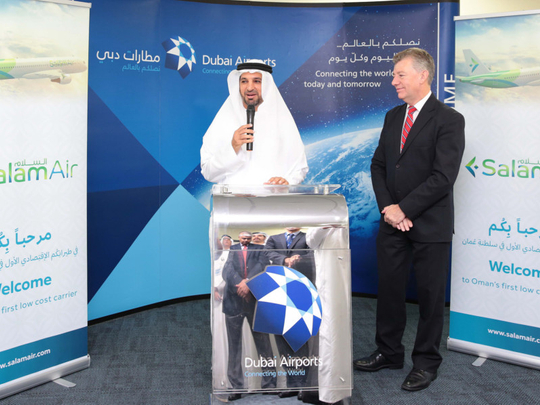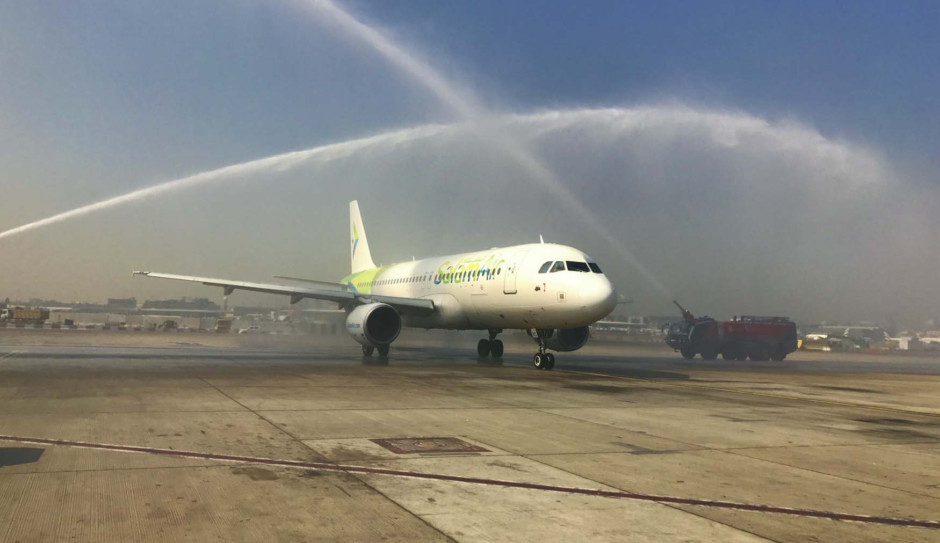
Dubai
SalamAir, the Oman-based budget airline, is planning to have 20 aircraft in its fleet within the next five years, adding at least three aircraft every year to achieve that target.
The carrier, which launched operations earlier this year, also plans to be flying to around 30 short- and medium-haul destinations in five years. Those destinations will mainly be within the GCC, the broader Middle East, South Asia, and the CIS states, according to Mohammad Ahmad, chief executive officer of SalamAir.
“Today we have three aircraft — all Airbus A320s … For next year, we are putting a plan of bringing three to four more aircraft, and we are in negotiations to choose those aircraft. We will then add 4-6 aircraft per year starting 2019,” the CEO told Gulf News.
He added that SalamAir is currently looking at all options for its new aircraft including Boeing’s 737 model, and will “proceed with the best deal” for aircraft.
Financing new aircraft
As for SalamAir’s plans to finance its fleet, Ahmed said the carrier currently has a 5-7 year lease per aircraft, and once it crosses those five years, it will look to purchase the aircraft.
“That’s (the purchase) not immediate, but we have our investors, and there are other vehicles to raise money through loans or through shares, but that won’t happen now,” the CEO said.
Asked whether the airline would consider tapping the bond market or an initial public offering, Ahmad said he could not comment on that as it was a board decision. He said, though, that “all possibilities will be taken, and this is not a government-backed [company]; it’s a private airline and the board will take the correct decision for the future of the airline.”
He said the board of directors has already had these types of discussions about possibly tapping financial markets.
New destinations
Currently, SalamAir flies from Muscat, Salalah, and Sohar to cities that include Dubai, Jeddah, Madinah, Karachi, and Sialkot. And the carrier is planning to add more destinations to its network.
“These things [always depend on] the traffic rights that are available to us and that we can secure, but Saudi Arabia is a very important market for us. In Pakistan, we have two destinations, and we’ve been promised that we’ll get more, so we’ll work on that,” Ahmad said.
He added, “The Indian subcontinent is a very important destination for us, although it looks difficult and not an immediate one, but we’d love to operate there soon. We’re also going to operate in Bangladesh.”
Foreign airlines have long tried to gain greater access to the Indian market, but are usually met with difficulties as the country’s aviation sector remains highly protected.
Ahmed said any destination in India is “extremely lucrative” for regional airlines as there is strong traffic flow between India and the Gulf.
“India is very controlled. They don’t have an Open Sky policy, and it’s all controlled by seat members between countries, and we are negotiating through our [aviation] authority to be included into this seat allocation to get a chance to operate there … Frankly, we would love to be able to start flying there tomorrow, but I don’t think [that] will happen,” he said.
He added that the Omani Civil Aviation Authority is having regular talks with Indian authorities to set up bilateral deals for flying there, but it was “a slow process.”
More regionally, SalamAir is aiming to add routes across the GCC, and is also eyeing Egypt, the Levant, Iraq, and Iran. The carrier will soon announce a route to Khartoum, and, beyond that, will “be looking to serve some of the CIS countries where there’s a lot of demand in the summer,” the CEO said.
Ahmed was speaking last week at the launch of SalamAir’s first flight to Dubai International Airport (DXB) after the airline had been flying to Dubai via Al Maktoum International Airport.
“We wanted to operate to DXB but because of the airport congestion and the slots, we [couldn’t fly there] so we started with Al Maktoum. It’s not just that we wanted to operate to Dubai; we wanted a certain time to make it convenient for our passengers, and we managed to get it in the end,” the CEO said.
The route to DXB will complement the carrier’s current flight to Al Maktoum International until October 28 when SalamAir plans to re-route all flights to DXB.












